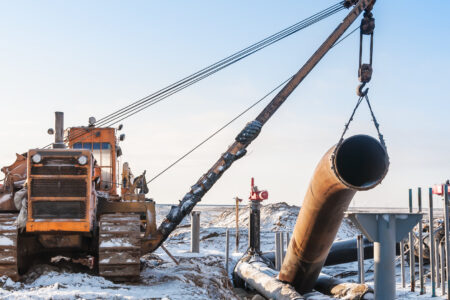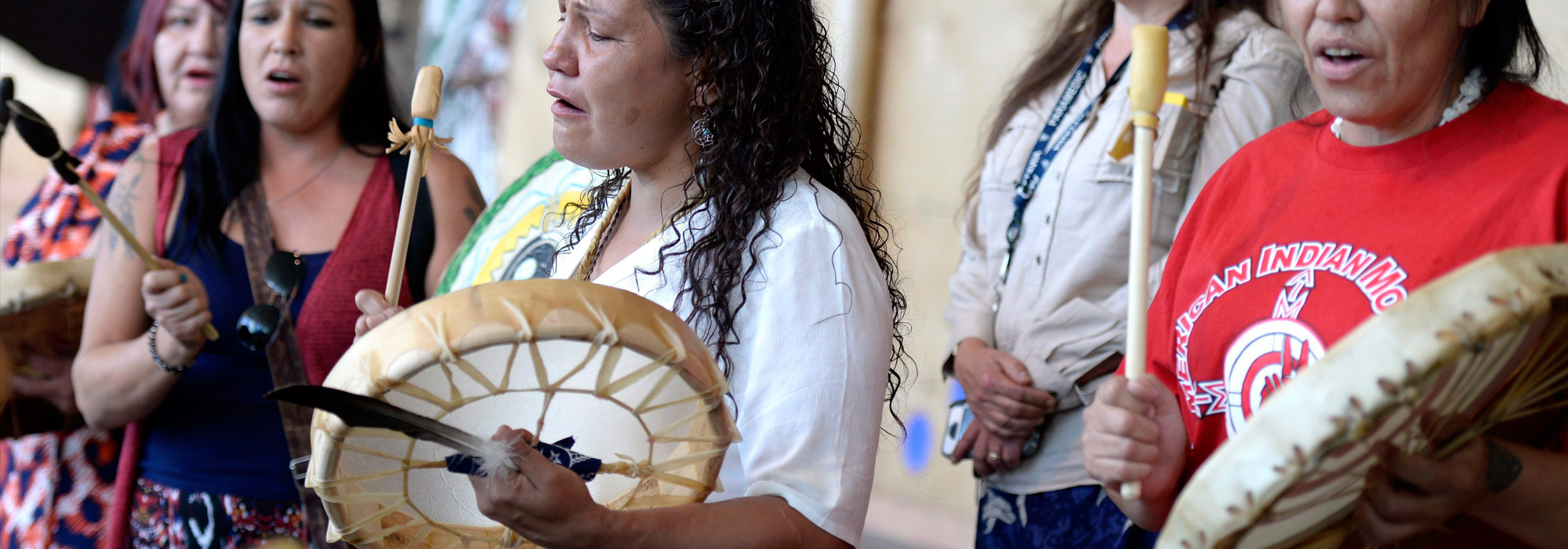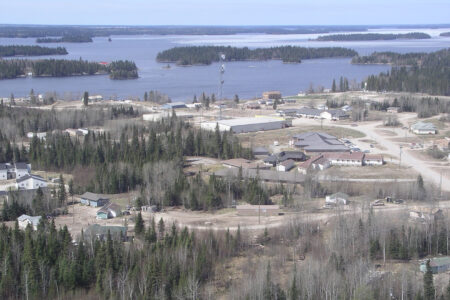
The federal government finally announced the details of the long-awaited national inquiry on murdered and missing Indigenous women and girls this week. Indigenous Affairs Minister Carolyn Bennett, Status of Women Minister Patti Hajdu and Justice Minister Jodi Wilson-Raybould each took turns sharing information about the key functions of the inquiry and introducing the newly appointed commissioners. The appropriate provincial and territorial ministers were notably absent, and so there was no public confirmation of their commitment to the inquiry.
That was not the only red flag. Despite the many months of delay to see the terms of reference that would govern this inquiry, the terms were not made public until well after the press conference. It should come as no surprise then that the national Indigenous organizations did not participate in the press conference with the ministers, as is standard when there is an announcement that affects Indigenous peoples.
Several weeks earlier, a leaked draft of the terms of reference drew strong criticism from the victims’ families, First Nations and human rights advocates. The primary concerns with the draft terms were:
- They lacked a specific mandate to address racism and sexism in police forces in Canada, or to establish a process to review individual cases.
- The inquiry lacked a framework that would focus on denial of human rights, instead of just socio-economic vulnerabilities.
- There was no specific authorization for commissioners to compel witnesses or evidence from provincial and territorial institutions, including police and child welfare agencies.
- There was no specific provision providing travel, legal and language supports for participants.
Families, Indigenous leaders and advocates demanded substantive amendments to the draft terms of reference, and they demanded to be included in the joint drafting of the terms. These requests were largely met with silence. Still, many watched this week’s press conference with guarded hope and tempered optimism.
Bennett told attendees that the two-year, $53.86-million-dollar inquiry would include terms that fully respected what she heard during the pre-inquiry engagement sessions. She also confirmed that all of the provinces and territories had “signed on” to the inquiry and each would follow up by passing orders-in-council to authorize the inquiry in their jurisdictions. This would, the minister promised, allow commissioners to compel witnesses and access data from various government institutions, including police and child welfare agencies. Hajdu explained that this inquiry is intended to address the existing racism, misogyny and corresponding violence in the very government institutions that are meant to help Indigenous women and girls. Wilson-Raybould indicated that additional funding would be provided to the provinces and territories as part of this process, to help families navigate provincial victim services processes. At the end of the conference, the ministers officially handed the torch over to the five commissioners, only three of whom were Indigenous women.
And yet, the final terms of reference did not appear to reflect what the ministers had promised. Reactions to the announcement by the families, Indigenous leaders and advocates were understandably mixed. Family members and advocates such as Amnesty International and the Native Women’s Association of Canada all expressed the concerns they had raised about the leaked draft: that policing was not specifically mentioned, and that the commissioners were not given express powers to address interjurisdictional issues like child welfare. These concerns were compounded by the fact that the provinces and territories, while included in the original draft, had been omitted from the final terms of reference. A coalition of First Nations and Indigenous women’s organizations, human rights experts and social-service providers from British Columbia issued a statement that voiced these concerns, as well concern about the failure of the inquiry to address inadequate police investigations on individual cases. The Native Women’s Association of Canada, the Métis National Council and Pauktuutit (an organization representing Inuit women) all raised the concern that, as with the Truth and Reconciliation Commission, no Inuit person was represented in the list of commissioners.
This is not to say that this announcement was all bad. Prime Minister Justin Trudeau delivered on his promise to make a national inquiry his first order of business. The federal government got off to a good start by committing funding for the inquiry and participating in pre-inquiry engagement sessions on how to structure it. The final terms of reference include direction for the inquiry to be “trauma-informed” — conducted with an awareness and sensitivity of what so many families and First Nations have endured over many decades. It will also include culturally appropriate supports for participants during the inquiry process. In response to those early consultations, the inquiry will not be conducted with a one-size-fits-all approach, but will be flexible enough to have regional variances guided by regional advisory committees. The federal government deserves credit for getting some of the terms right.
However, the good parts of the inquiry could end up being outweighed by the challenges, if the federal, provincial and territorial governments don’t take action to address those challenges. The deletion of the provinces and territories from the final terms of reference is not just symbolic, it could lead to disputes around access to information in the various jurisdictions. We do not know at this point when and if all the provinces and territories will enact orders in council to authorize the inquiry in their jurisdictions; whether they will commit to share information that is not currently shared between jurisdictions (such as police data), and do so in a prompt manner. It must be kept in mind that the Truth and Reconciliation Commission had to take the federal government to court several times just to get access to information. While this is a different government, it’s asking a lot of families to hope that every province and territory will be compliant in such a limited time frame: only two years.
Meanwhile, the lack of a specific mandate to investigate police conduct (i.e., racism, misogyny and violence toward Indigenous women and girls) is a glaring omission that could undermine the entire process. Police abuse of Indigenous women and girls was highlighted in a Human Rights Watch report that received little attention from governments or police. The RCMP Commissioner subsequently reassured his 29,000 members that they should not to worry about the report, that he “had their backs.” The omission of a specific mandate to investigate police conduct, taken together with the failure to establish a process to review the many problems with police investigations related to solved, unsolved, uninvestigated, and misnamed cases (like those prematurely deemed suicides or accidents) is also considered a gaping hole in the inquiry. It is ludicrous for Hajdu to admit that government institutions are infected with the racism and misogyny that has resulted in violence against Indigenous women and girls, and then refer the families back to the same abusive institutions that hurt them.
The question we are left with, then, is whether this inquiry, as currently constructed, will give Indigenous peoples what we want. The answer appears to be maybe, but only if more pressure and scrutiny are brought to bear. This will place yet another unfair burden on Indigenous women to monitor the progress of the inquiry, but it also places an unfair burden on the commissioners to deliver what was promised, when the terms of reference are so vague. Real justice for the families could come if there were several processes going on in parallel with the inquiry, in order to focus the inquiry and make strategic use of the exceptionally limited two-year period. One arm of the inquiry could hear testimony and review old, closed, misnamed and never-opened cases. Another arm could specifically look at police conduct, which, given the number of police forces in Canada, would be significant. Yet another arm of the inquiry could focus on child welfare agencies and their role in the crisis.
Even if the commissioners can work at the speed of light, force a proper inquiry and manage to resolve jurisdictional issues, the fact that the inquiry has been called does not let the federal, provincial and territorial governments off the hook to take action. They too could engage in processes parallel to the inquiry to eliminate legislated and policy-based discrimination against Indigenous women and girls and address the discriminatory and chronic underfunding of critical social services on which Indigenous women and girls rely. There have been numerous reports and thousands of recommendations on how to end these blatant human rights abuses against Indigenous women and girls. Now they simply need to get on with the work.
If the federal government was hoping for a day of celebration, they greatly underestimated the commitment of Indigenous peoples to protect their women and little girls. Had the federal government fulfilled its promise to work in partnership with Indigenous peoples on a Nation-to-Nation basis and included them in the drafting of the terms of reference, we wouldn’t be in this mess. Part of challenging the colonialism that Bennett referred to in her press conference is to hold the government to account when it acts paternalistically. Now the hard work begins to hold the commissioners to account to ensure this inquiry is not hampered by the gaping holes left by the government’s failure to include Indigenous peoples as decision-makers in our own inquiry.
Photo: Women drum following the announcement of the inquiry into Murdered and Missing Indigenous Women at the Museum of History in Gatineau, Quebec on Wednesday, Aug. 3, 2016. The federal government has announced the terms of a long-awaited inquiry into murdered and missing indigenous women, unveiling that it will need at least $13.8 million more for the study than was originally expected. The Canadian Press/Justin Tang
Do you have something to say about the article you just read? Be part of the Policy Options discussion, and send in your own submission. Here is a link on how to do it. | Souhaitez-vous réagir à cet article ? Joignez-vous aux débats d’Options politiques et soumettez-nous votre texte en suivant ces directives.







